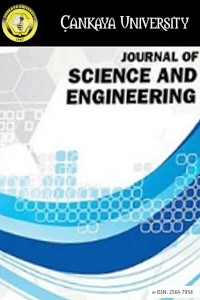Abstract
References
- [1] D. Berenstein, and A. Miller, “Superposition induced topology changes in quantum gravity,” Journal of High Energy Physics, vol. 11, 2017.
- [2] E. Celeghini, M. Gadella, and M. A. del Olmo. “Lie algebra representations and rigged Hilbert spaces: The SO (2) case,” arXiv preprint arXiv:1711.03805, 2017.
- [3] D.K. Bhattacharya and T.E. Aman, “Γ- Hilbert space and linear quadratic control problem,” Revista de la Academia Canaria de Ciencias, vol. XV(nums 1-2), pp. 107-114, 2004.
- [4] S. Farzaneh Javan, S. Abbasbandy, F. Araghi, and M. Ali, “Application of reproducing kernel Hilbert space method for solving a class of nonlinear integral equations,” Mathematical Problems in Engineering, no. 7498136, 2017, doi: 10.1155/2017/7498136.
- [5] J. R. Fliss, X. Wen, O. Parrikar, C. T. Hsieh, B. Han, B, T. L. Hughes, and R. G. Leigh, “Interface contributions to topological entanglement in abelian Chern-Simons theory,” Journal of High Energy Physics, vol. 9, pp. 56, 2017.
- [6] M. T. Garayev, M. Gürdal, and S. Saltan, “Hardy type inequaltiy for reproducing kernel Hilbert space operators and related problems,” Positivity, vol. 21, no. 4, pp. 1615-1623, 2017.
- [7] S. Grivaux, E. Matheron, and Q. Menet, “Linear dynamical systems on Hilbert spaces: typical properties and explicit examples,” arXiv preprint arXiv:1703.01854, 2017.
- [8] S. Herath, M. Harandi, and F. Porikli, “Learning an invariant hilbert space for domain adaptation,” In Proceedings of the IEEE Conference on Computer Vision and Pattern Recognition, pp. 3845-3854, 2017.
- [9] L. Debnath and P. Mikusinski, Introduction to Hilbert space with Applications, Academic press, INC, New York, Toronto, 1980.
- [10] W. S. Massey, A basic course in algebraic topology, vol. 127, Springer, 2019.
- [11] V. Moretti and M. Oppio, “Quantum theory in real Hilbert space: How the complex Hilbert space structure emerges from Poincaré symmetry,” Reviews in Mathematical Physics, vol. 29, no. 06, 1750021, 2017.
- [12] Y. X. Xiao, G. Ma, Z. Q. Zhang, and C. T. Chan, “Topological subspace-induced bound state in the continuum,” Physical review letters, vol. 118, no. 16, 166803, 2017.
Abstract
Theory of elliptic equations and undergone considerable progress that has created the concept of the topological character and eventually has created interesting connection with the analysis and Hilbert Space. Connection of Hilbert space and Topological space has been a matter of curiosity for many. Although there is no much work done on this topic, the answer to this question is Hilbert space is a part of the Topological space only when there is a need of functional analysis. In other words topology is induced to the Hilbert space but in real they are not a part of each other. In algebra concept, topology is involved in the Hilbert spaces to support the idea of metric space. Topological space consists of abstract sets of points that includes specific collection open sets of subsets that need to satisfy the axioms. Hausdorff space is one of the types of topological space .Lot of properties are satisfied by the Hausdorff space which are not satisfied by other way. Unlike the Hilbert space, the topological space is not highly complicated and forms the basis of the functional analysis. Two things, a topological space and one special type of vector are present at once in the Hilbert space. Thus, in Hilbert space more topological structure is given by the topological space while the special type of vector would help in giving some algebraic space.
References
- [1] D. Berenstein, and A. Miller, “Superposition induced topology changes in quantum gravity,” Journal of High Energy Physics, vol. 11, 2017.
- [2] E. Celeghini, M. Gadella, and M. A. del Olmo. “Lie algebra representations and rigged Hilbert spaces: The SO (2) case,” arXiv preprint arXiv:1711.03805, 2017.
- [3] D.K. Bhattacharya and T.E. Aman, “Γ- Hilbert space and linear quadratic control problem,” Revista de la Academia Canaria de Ciencias, vol. XV(nums 1-2), pp. 107-114, 2004.
- [4] S. Farzaneh Javan, S. Abbasbandy, F. Araghi, and M. Ali, “Application of reproducing kernel Hilbert space method for solving a class of nonlinear integral equations,” Mathematical Problems in Engineering, no. 7498136, 2017, doi: 10.1155/2017/7498136.
- [5] J. R. Fliss, X. Wen, O. Parrikar, C. T. Hsieh, B. Han, B, T. L. Hughes, and R. G. Leigh, “Interface contributions to topological entanglement in abelian Chern-Simons theory,” Journal of High Energy Physics, vol. 9, pp. 56, 2017.
- [6] M. T. Garayev, M. Gürdal, and S. Saltan, “Hardy type inequaltiy for reproducing kernel Hilbert space operators and related problems,” Positivity, vol. 21, no. 4, pp. 1615-1623, 2017.
- [7] S. Grivaux, E. Matheron, and Q. Menet, “Linear dynamical systems on Hilbert spaces: typical properties and explicit examples,” arXiv preprint arXiv:1703.01854, 2017.
- [8] S. Herath, M. Harandi, and F. Porikli, “Learning an invariant hilbert space for domain adaptation,” In Proceedings of the IEEE Conference on Computer Vision and Pattern Recognition, pp. 3845-3854, 2017.
- [9] L. Debnath and P. Mikusinski, Introduction to Hilbert space with Applications, Academic press, INC, New York, Toronto, 1980.
- [10] W. S. Massey, A basic course in algebraic topology, vol. 127, Springer, 2019.
- [11] V. Moretti and M. Oppio, “Quantum theory in real Hilbert space: How the complex Hilbert space structure emerges from Poincaré symmetry,” Reviews in Mathematical Physics, vol. 29, no. 06, 1750021, 2017.
- [12] Y. X. Xiao, G. Ma, Z. Q. Zhang, and C. T. Chan, “Topological subspace-induced bound state in the continuum,” Physical review letters, vol. 118, no. 16, 166803, 2017.
Details
| Primary Language | English |
|---|---|
| Subjects | Engineering |
| Journal Section | Articles |
| Authors | |
| Publication Date | November 1, 2020 |
| Published in Issue | Year 2020 Volume: 17 Issue: 2 |

